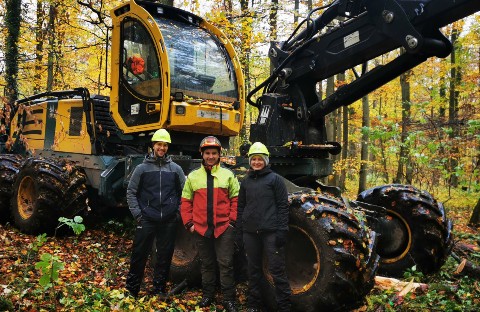
Mechanized Harvesting in Hesse’s ONEforest pilot
The University of Freiburg, together with Hessen Forst and Forstbetrieb Kaffenberger, conducted a field study in Hesse, one of the designated Case Study Regions under the ONEforest initiative. The focal point of the research was the forest district Homberg, home to a 95-year-old woodland predominantly featuring European beech (Fagus silvatica). This ancient stand also boasted a diverse mix of ash (Fraxinus excelsior), oak (Quercus spp.), sycamore maple (Acer pseudoplatanus), European larch (Larix decidua), and spruce (Picea abies).
The primary objective of the study was to assess the impact of a thinning operation, where approximately 40% of the annual volume increment was harvested. The rationale behind this intervention was to create more space for the upcoming tree generation and facilitate the growth of young trees. Traditionally, manual labor has been the method of choice for harvesting in deciduous forest stands, particularly among older tree populations. However, the inherent risks of accidents in such conditions prompted the exploration of mechanized alternatives.
Incorporating mechanized work, specifically utilizing a harvester, not only addressed safety concerns but also enhanced precision in directional felling, minimizing potential damages to the remaining stand. The study aimed to delve into the opportunities and challenges associated with the implementation of mechanized harvesting techniques in deciduous forest stands.
The harvester used in the study featured a specially designed head intended to increase overall yield by optimizing harvested volume from standing tree volume. Additionally, the equipment aimed to improve work productivity and enhance resource efficiency through reduced fuel consumption. To thoroughly evaluate the machine's performance, the researchers conducted an elementary time study and analyzed machine protocols using the StanForD methodology. This dual approach provided a nuanced understanding of the efficiency, productivity, and resource utilization aspects of mechanized harvesting in deciduous forest environments.
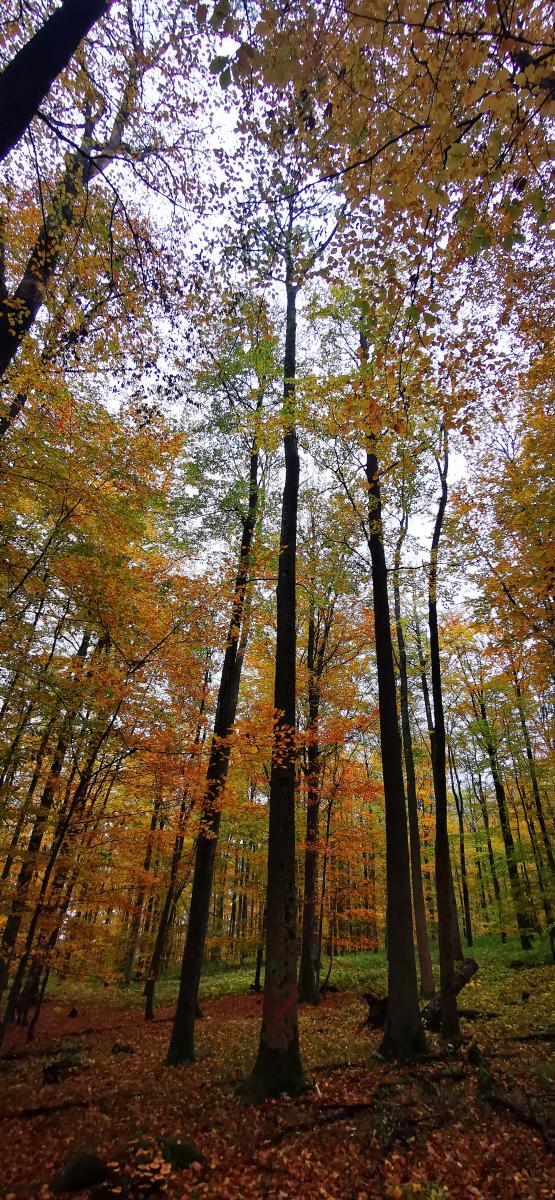
Mixed forest stand with dominating European beech before thinning (by Julian Burger).
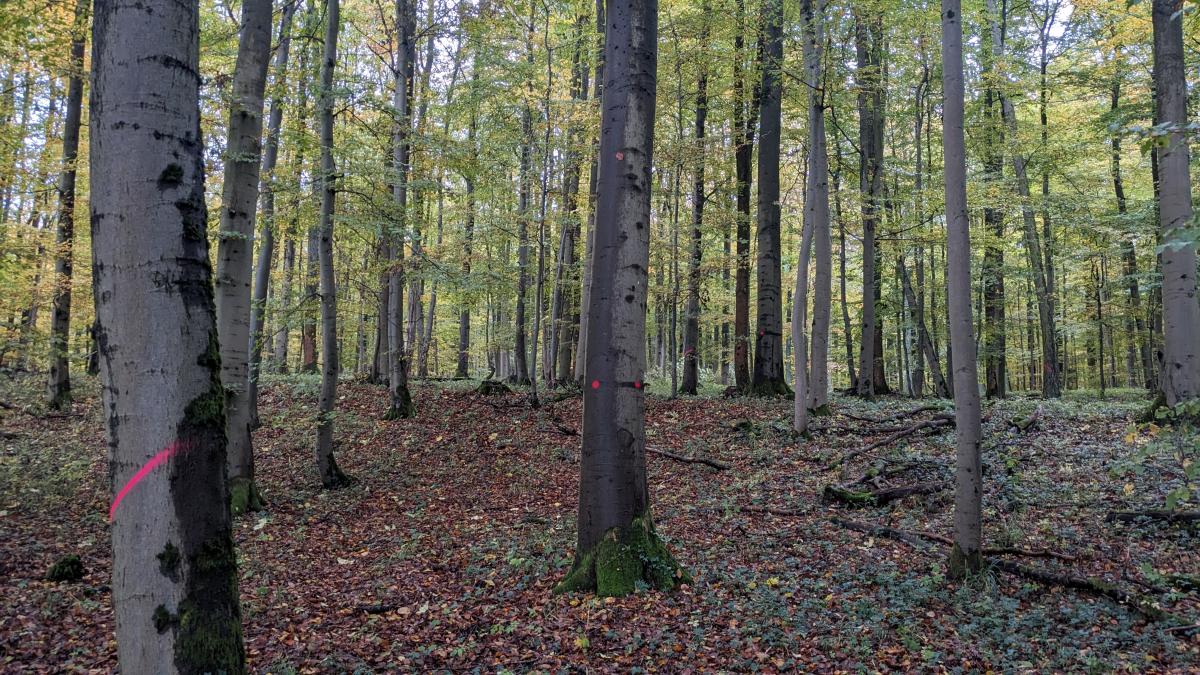
Forest stand before thinning with marked future crop tree (red dot) and trees to be harvested (red diagonal slash) (by Benjamin Engler).
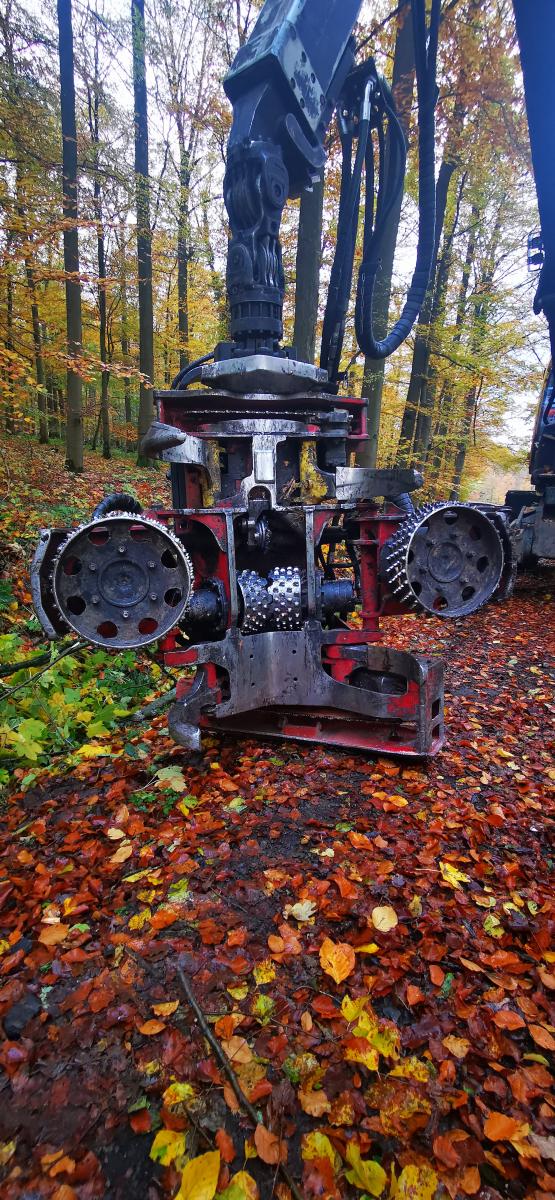
Studied harvester head Waratah H415 HD (by Julian Burger).
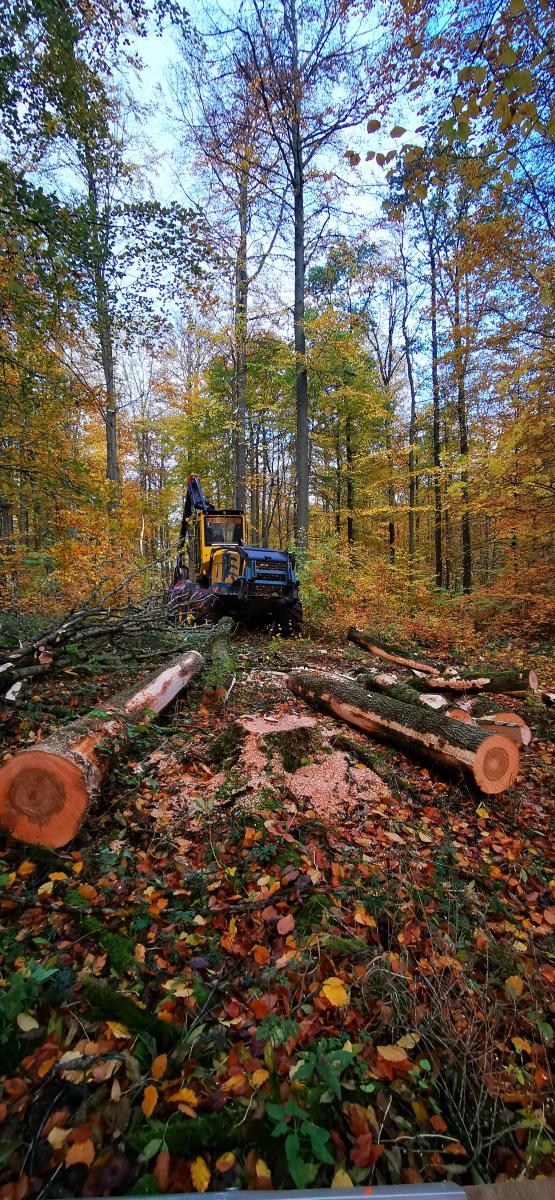
Processed logs and harvester (by Julian Burger).
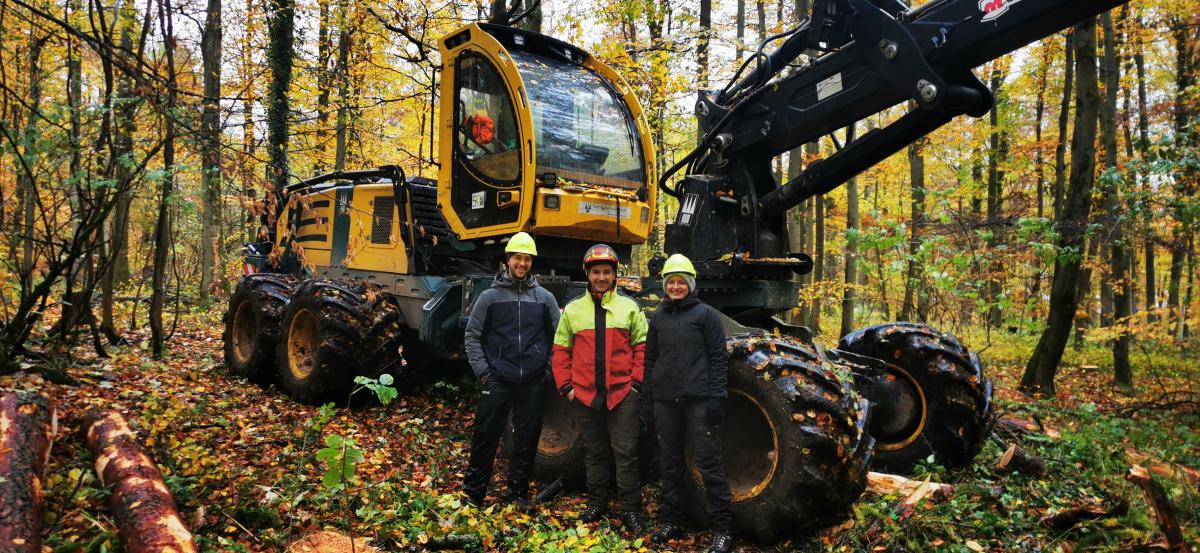
Team of the University of Freiburg, Chair of Forest Operations, from left to right: Leon Schmidt, Julian Burger, Gwendolin Hartmann, missing Benjamin Engler (by Julian Burger).

